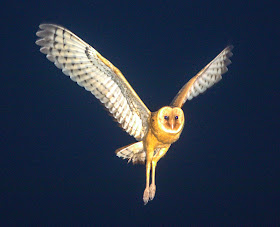Friday, 30 September 2022
Eastern Grass Owl on the decline around the Sunshine Coast
The Eastern Grass Owl is regarded generally as scarce in Australia. In south-east Queensland it is restricted to tall grassland in coastal areas, often interspersed with sugar cane plantations. The Sunshine Coast is arguably the stronghold of the species in the region. Birds here are concentrated in the grasslands and plantations of the Maroochy River floodplain, and in isolated areas of wallum heath.
Since moving to the Sunshine Coast in 2009, I have noticed a clear and sharp decline in numbers of Eastern Grass Owl locally. They were once resident in Yandina Creek Wetland and along the adjoining River Road but I’ve not detected them there during recent surveys. Across the Maroochy River in the vicinity of Burtons Road near Bli Bli, I was aware of three pairs in different places on private property, to which I had access with permission from owners. This population is much reduced and any birds remaining are no longer nesting, as they had in the past.
A few birds remain elsewhere on the floodplain, where the images in this post were taken recently, but overall the population continues to decline. Records from wallum heath in Noosa and Mooloolah River National Parks were always few but there has been just one (in Mooloolah River NP) in recent years to my knowledge.
One of the great local conservation initiatives – by the Sunshine Coast Council, Unitywater and the Queensland Government – in recent years has been the establishment of the so-called Blue Heart. About 1000 hectares of wetland (including Yandina Creek Wetland) and adjoining properties have been acquired and protected as reserves north of the Maroochy River. Unfortunately the project does not extend south of the river, where most of the populations of Eastern Grass Owl and other scarce grassland and wetland species occur.
The new runway at Sunshine Coast Airport destroyed one of the finest grassland areas, which was occupied by two pairs of Eastern Grass Owl, as well as some of the last remnants of wallum heath surviving on the Sunshine Coast outside national parks. The cane farms in the Burton Road area are being subdivided by the council (above and below), although the land is highly flood-prone. In the past, cane farmers rotated areas of land under cane and grassland, allowing the owls and other wildlife to move around and survive. Now, much less cane is grown and grasses are cut by new landowners. Those small areas left uncut are overcome with weeds as well as Allocasuarina and Melaleuca trees. Consequently, most habitat suitable for the Eastern Grass Owl and other species is gone and what remains is shrinking. On top of all this, the Sunshine Coast is one of Australia's fastest growing regions with ever growing vehicle traffic. Several road-killed grass owls have been picked up around the Maroochy River floodplain.
POSTSCRIPT
The ABC Sunshine Coast put this story up online about the issues discussed above.






No comments:
Post a Comment